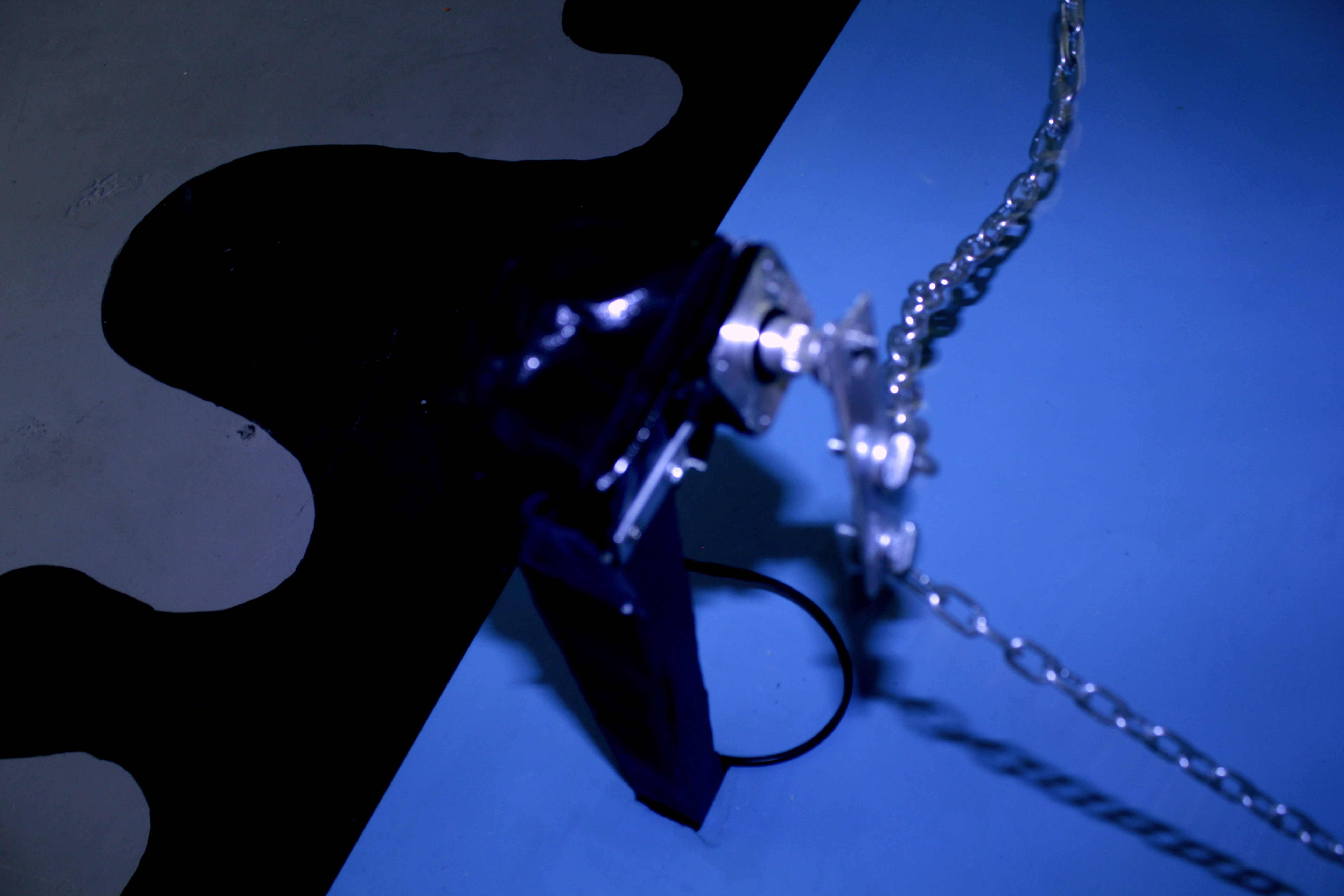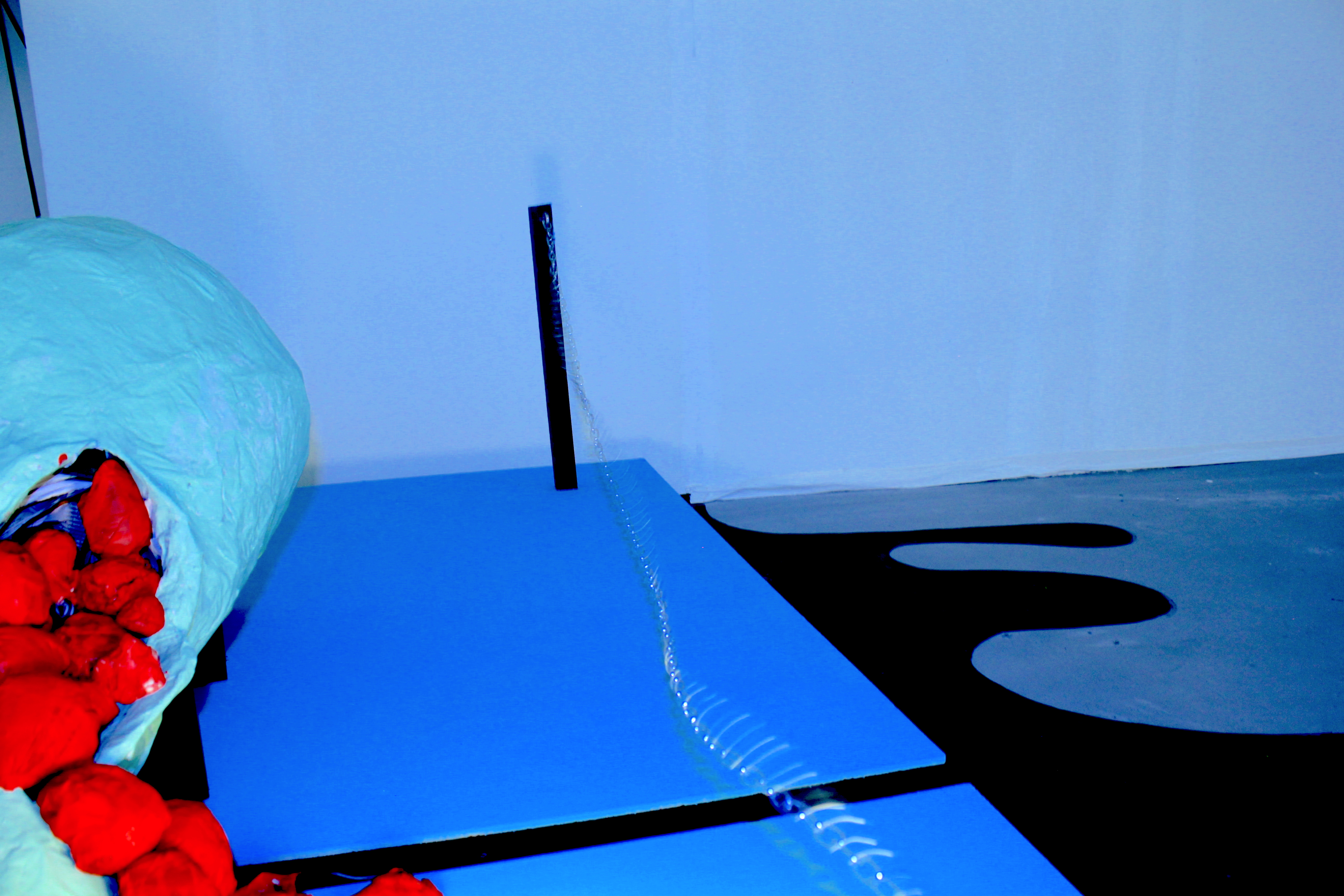Paper Machine (2018)
Paper Machine is an installation piece intended to provoke realisations about the nature of future interactions with “artificially” intelligent beings. A floating platform is cordoned off by chains, mimicking the enclosed spaces found in a typical art gallery. Do not touch the art.
Computational epistemologies create increasingly discrete realities. That is in measurable in opposition to the continuous nature of reality. Paper Machine imagines an AI capable of playful- and bashfulness which operates at a scale of discretion invisible to our human perception. It is omnipresent. When triggered by viewer movement the chains will begin to shake and waggle. A form of non-verbal communication inspired by the fact we cannot talk to animals.

Visual arts are a human affair. While elephants may paint, and peacocks may fan stunning visualities, these are not art and they are not artists. The common ground with art is these are evolutionary behaviours. It is simply that humans have the need for a greater range of behaviours to navigate reality.
As such the purpose of art has infinite applications. In this case Paper Machine contains a sous piece of sculpture made from the ever-popular and accessible material papier-mâché. The sculpture itself is ultimately irrelevant to the work except for the eye. Bright colours, simple methods were used to cut through subtleties which may detract from the questioning nature of the work.
I wanted to create the experience of being accompanied to an art gallery by your new friend, the AI, to have a look about at some stuff. In this instance I created a balloon, bursting of red balls.
Aesthetic
Exposed computation and mechanical parts, papier-mâché, hand-painted floor decoration. These fit within my imagined ideal of aesthetic telling a story. It is also a refusal to act as R&D for advertisers- an industry playing a key part in the bastardisation of artificial intelligence.
Computation
In making the work I was influenced by methodologies such as Muntzing, the stripping of un-necessary components to achieve the desired outcome; “worse is better”, a variation on the adage of ‘do one thing and do it well’; and the game of code golf, where an effect is strived for using the least possible.
Paper Machine uses an Aukru Ultrasonic Distance Sensor, connected to a (first servo then after hardware failure, stepper) motor in turn controlled by an Arduino Uno.
The sensor was placed under the floating platforms at the corner closest to the approaching viewer. Viewers had to walk past the sensor in order to read the art statement positioned on the back wall. Two distances were set which increased or decreased the number of revolutions the motor would turn, and therefore the speed and chaotic appearance of the chain.
Self-Evaluation
In building Paper Machine I learned the importance of quality components. My motors were unsuitable for long running conditions in the conditions they were deployed in. Both motors burned out 15 minutes before the opening of the Echosystems opening night.
Repairs on the installation took place the following day and the piece ran as intended from Saturday (even after being left on all night) to the Sunday close. Despite having less torque this motor worked more effectively.
Further Development
This is my first foray into chains. My initial idea was one large chain moving in a highly violent manner. I was unable to implement this due to space requirements. The motivation was still to portray embodiment of artificial intelligence.
Pursuing slicker and hidden computing facets does hold my interest, my concerns being that it overrides the speculative side of the work which I prize more highly. A high-finish is certainly possible and an attractive problem to solve, though it may turn the work into a spectacle instead.
Mathew Sayer, 2018
































































